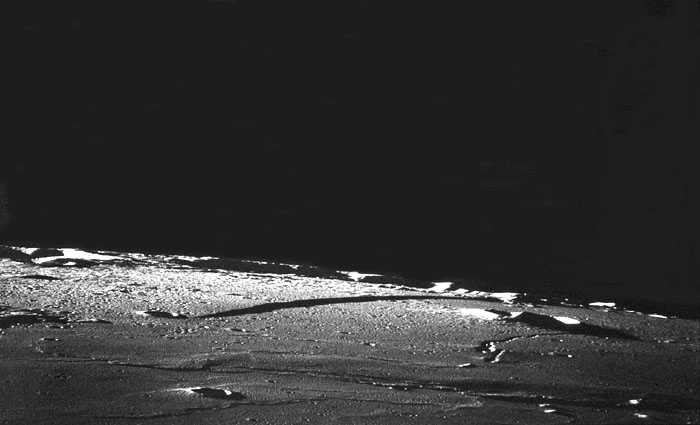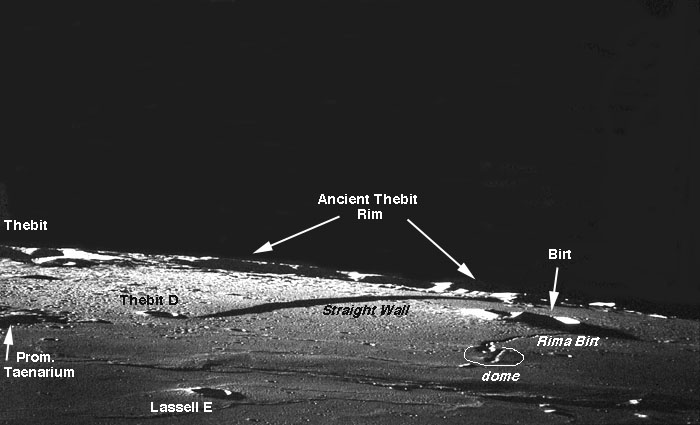Difference between revisions of "July 30, 2004"
| (8 intermediate revisions by the same user not shown) | |||
| Line 1: | Line 1: | ||
__NOTOC__ | __NOTOC__ | ||
=Obliquely Viewed Fault= | =Obliquely Viewed Fault= | ||
| + | <!-- Start of content --> | ||
<br> | <br> | ||
<table width="85%" border="0" align="center" cellpadding="6" cellspacing="2"> | <table width="85%" border="0" align="center" cellpadding="6" cellspacing="2"> | ||
| Line 9: | Line 10: | ||
<tr> | <tr> | ||
<td colspan="2"><div align="center"> | <td colspan="2"><div align="center"> | ||
| − | + | {{HoverImage|LPOD-2004-07-30.jpeg|LPOD-2004-07-30b.JPG}} | |
</div></td> | </div></td> | ||
</tr> | </tr> | ||
| Line 15: | Line 16: | ||
<table width="100%" border="0" cellpadding="8"> | <table width="100%" border="0" cellpadding="8"> | ||
<tr> | <tr> | ||
| − | <td><div align="center | + | <td><div align="center"><p>Image Credit: [http://www.lpi.usra.edu/research/apollo/ Apollo 16-120-19224]</p></div></td> |
</tr> | </tr> | ||
</table> | </table> | ||
| Line 22: | Line 23: | ||
<p class="story" align="center"><b>Obliquely Viewed Fault</b></p> | <p class="story" align="center"><b>Obliquely Viewed Fault</b></p> | ||
<p class="story" align="left"> | <p class="story" align="left"> | ||
| − | One of the most famous features on the Moon - certainly as judged by the number of image submissions to LPOD - is the [ | + | One of the most famous features on the Moon - certainly as judged by the number of image submissions to LPOD - is the [[January_11,_2004|Straight Wall]]. Until chancing upon this image in the online Apollo Image Atlas at the Lunar & Planetary Institute, I though that the Wall had not been photographed during the Apollo program. I don't know why this shot has not been widely used because it is great! From the 110 km altitude of the Apollo 16 Command Module the Wall appeared near the southern horizon, allowing this unique oblique view taken with the handheld Hasselblad camera. Along the skyline (spaceline?) is the rim of the half crater (that I call Ancient Thebit) whose floor is cut by the Straight Wall. The foreground shows the wrinkle ridges that continue the rim of the 225 km wide Ancient Thebit as a ghost half crater. Clearly the lavas of Mare Nubium are younger (because they hold far fewer small impact craters) than those that fill Ancient Thebit. The trace of the 400 m high Straight Wall appears curved, as if the floor of Ancient Thebit is bowed up. And the dome that is the source of the Birt Rille is very low - domes really do have shallow slopes..</p> |
<blockquote> | <blockquote> | ||
<p align="right"> — [mailto:tychocrater@yahoo.com Chuck Wood]</p> | <p align="right"> — [mailto:tychocrater@yahoo.com Chuck Wood]</p> | ||
| Line 30: | Line 31: | ||
<p><b>Related Links: </b><br> | <p><b>Related Links: </b><br> | ||
[http://skyandtelescope.com/observing/objects/moon/article_133_1.asp Ancient Thebit & the Straight Wall] </p> | [http://skyandtelescope.com/observing/objects/moon/article_133_1.asp Ancient Thebit & the Straight Wall] </p> | ||
| − | <p><b>Tomorrow's LPOD:</b> 40 Years Since Impact</p> | + | <p><b>Yesterday's LPOD:</b> [[July 29, 2004|EAW & GPK]] </p> |
| + | <p><b>Tomorrow's LPOD:</b> [[July 31, 2004|40 Years Since Impact]] </p> | ||
</tr> | </tr> | ||
</table> | </table> | ||
| Line 41: | Line 43: | ||
<td><p align="center" class="main_titles"><b>Author & Editor:</b><br> | <td><p align="center" class="main_titles"><b>Author & Editor:</b><br> | ||
[mailto:tychocrater@yahoo.com Charles A. Wood]</p> | [mailto:tychocrater@yahoo.com Charles A. Wood]</p> | ||
| − | < | + | <!-- Cleanup of credits --> |
| − | + | <!-- Cleanup of credits --> | |
| − | < | + | <!-- Cleanup of credits --> |
| − | + | <!-- Cleanup of credits --> | |
| − | < | + | <!-- Cleanup of credits --> |
| − | + | <!-- Cleanup of credits --> | |
| + | <!-- Cleanup of credits --> | ||
</tr> | </tr> | ||
</table> | </table> | ||
<p> </p> | <p> </p> | ||
| − | ---- | + | <!-- End of content --> |
| − | + | {{wiki/ArticleFooter}} | |
| − | |||
Latest revision as of 18:22, 7 February 2015
Obliquely Viewed Fault
Image Credit: Apollo 16-120-19224 |
|
Obliquely Viewed Fault One of the most famous features on the Moon - certainly as judged by the number of image submissions to LPOD - is the Straight Wall. Until chancing upon this image in the online Apollo Image Atlas at the Lunar & Planetary Institute, I though that the Wall had not been photographed during the Apollo program. I don't know why this shot has not been widely used because it is great! From the 110 km altitude of the Apollo 16 Command Module the Wall appeared near the southern horizon, allowing this unique oblique view taken with the handheld Hasselblad camera. Along the skyline (spaceline?) is the rim of the half crater (that I call Ancient Thebit) whose floor is cut by the Straight Wall. The foreground shows the wrinkle ridges that continue the rim of the 225 km wide Ancient Thebit as a ghost half crater. Clearly the lavas of Mare Nubium are younger (because they hold far fewer small impact craters) than those that fill Ancient Thebit. The trace of the 400 m high Straight Wall appears curved, as if the floor of Ancient Thebit is bowed up. And the dome that is the source of the Birt Rille is very low - domes really do have shallow slopes.. Technical Details: Related Links: Yesterday's LPOD: EAW & GPK Tomorrow's LPOD: 40 Years Since Impact |
Author & Editor: |
COMMENTS?
Register, Log in, and join in the comments.





